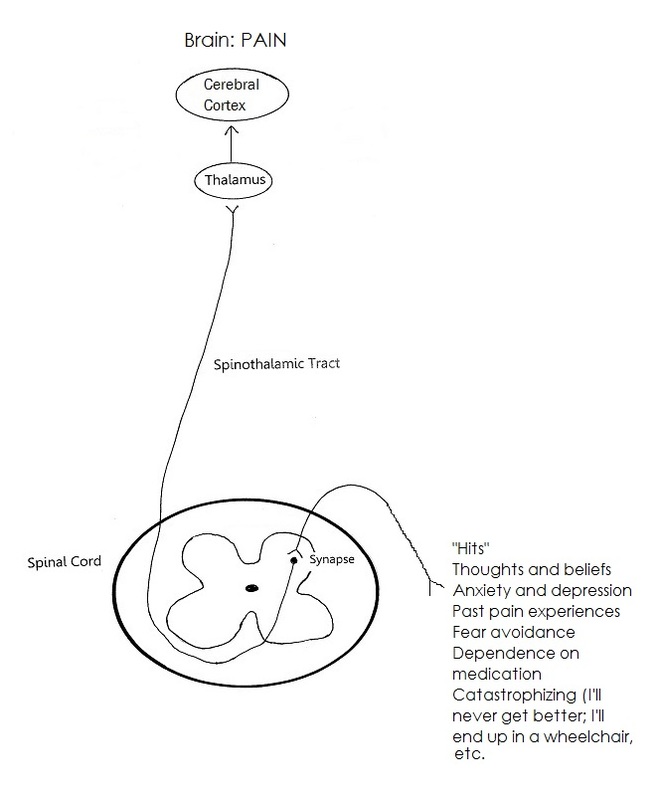Central sensitisation
This is when the nervous system becomes over sensitive to stimulation. The threshold for Pain/sensation is lowered, and it takes less and less provocation to elicit a Pain response.
Because the central nervous system (CNS) is in such a state of high reactivity, a stimulus such as touch or temperature may be interpreted by the brain as pain. This is known as allodynia.
When a very minor painful stimulus, such as a slight bump on the elbow, is perceived as excruciating pain, this is known as hyperalgesia.
This is when the nervous system becomes over sensitive to stimulation. The threshold for Pain/sensation is lowered, and it takes less and less provocation to elicit a Pain response.
Because the central nervous system (CNS) is in such a state of high reactivity, a stimulus such as touch or temperature may be interpreted by the brain as pain. This is known as allodynia.
When a very minor painful stimulus, such as a slight bump on the elbow, is perceived as excruciating pain, this is known as hyperalgesia.
Different stimuli such as light, sound, odours or even thoughts, may trigger allodynia or hyperalgesia.
Why does this happen?
Central sensitisation is what develops and maintains chronic pain. It plays a key role in many different chronic pain disorders, such as neck and back pain, whiplash injuries and injuries sustained in a motor vehicle accident, tension headaches, migraine headaches, fibromyalgia, chronic fatigue syndrome, and irritable bowel syndrome.
Broadly speaking, there are two types of factors that cause central sensitisation:
Psychological factors like stress have been shown to lower pain thresholds. Stress and anxiety about pain leads to higher pain sensitivities (lower pain thresholds). If the CNS is already over reactive, central sensitisation may be more likely to happen when pain occurs.
Chronic pain sufferers may experience non-restorative sleep, which, in turn may cause increased sensitivity to pain: a vicious cycle.
Why does this happen?
Central sensitisation is what develops and maintains chronic pain. It plays a key role in many different chronic pain disorders, such as neck and back pain, whiplash injuries and injuries sustained in a motor vehicle accident, tension headaches, migraine headaches, fibromyalgia, chronic fatigue syndrome, and irritable bowel syndrome.
Broadly speaking, there are two types of factors that cause central sensitisation:
- Predisposing factors: these are factors that exist before pain has occurred, and can be biological, psychological or environmental.
Psychological factors like stress have been shown to lower pain thresholds. Stress and anxiety about pain leads to higher pain sensitivities (lower pain thresholds). If the CNS is already over reactive, central sensitisation may be more likely to happen when pain occurs.
- Factors after the onset of pain which may lead to central sensitisation:
Chronic pain sufferers may experience non-restorative sleep, which, in turn may cause increased sensitivity to pain: a vicious cycle.


 RSS Feed
RSS Feed